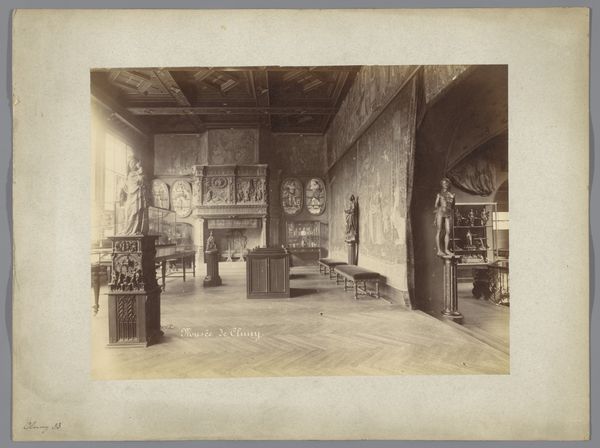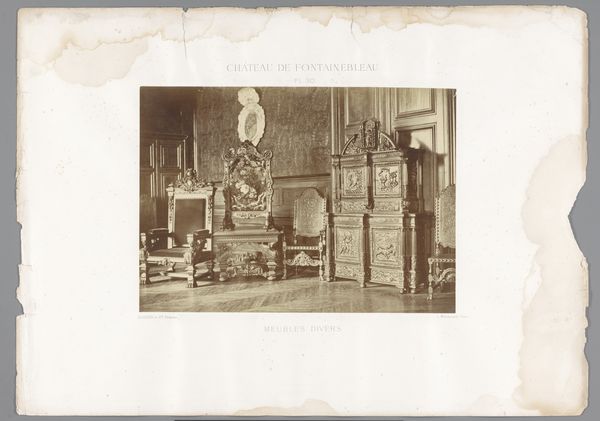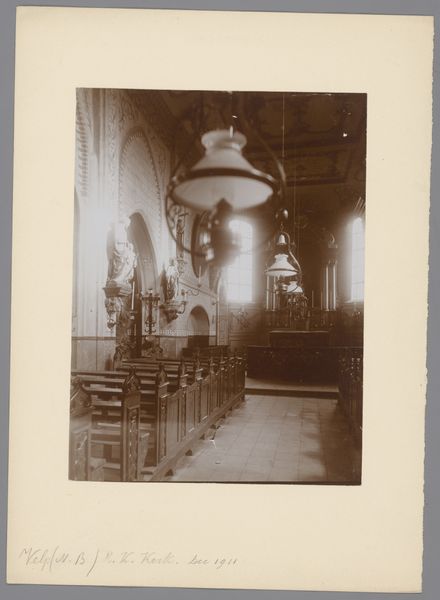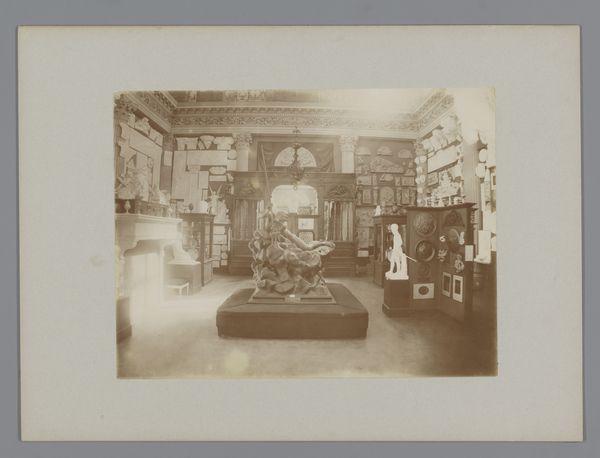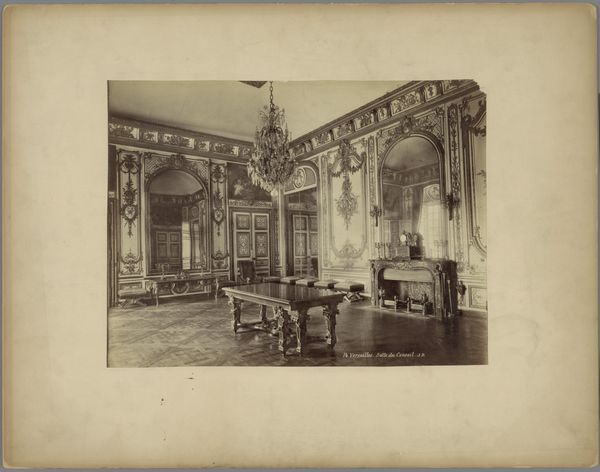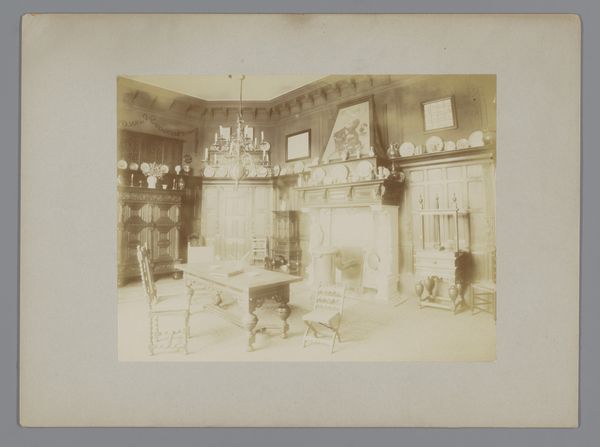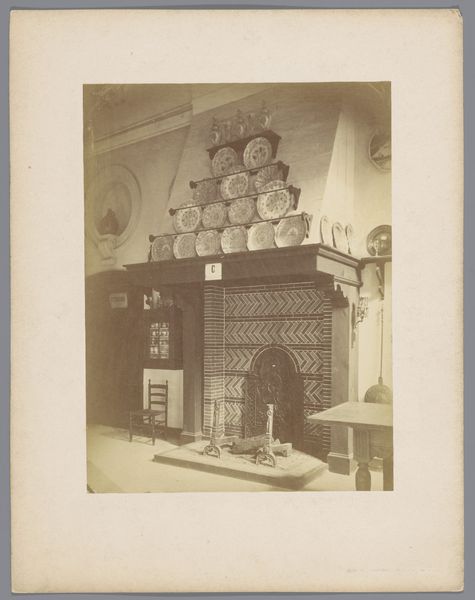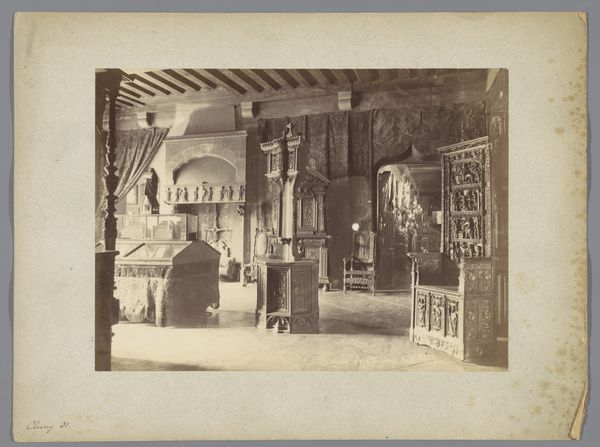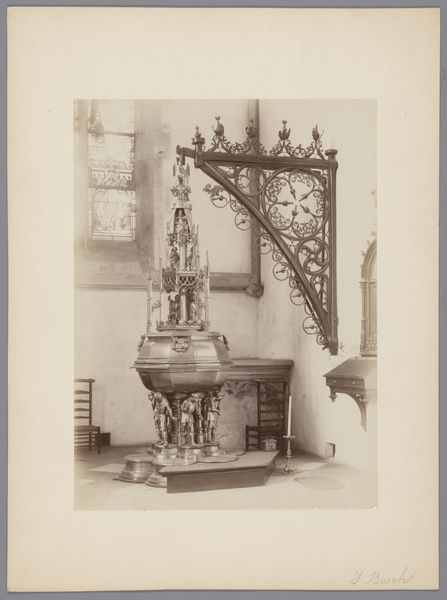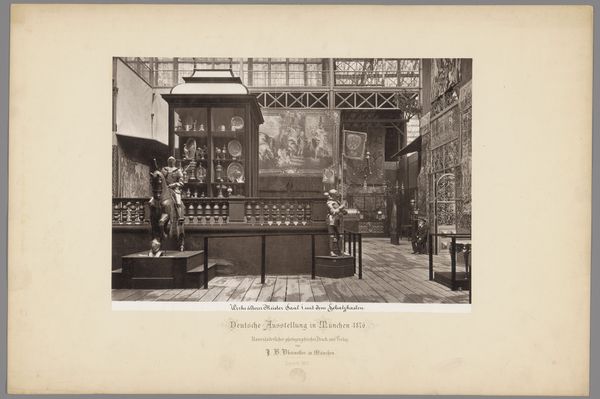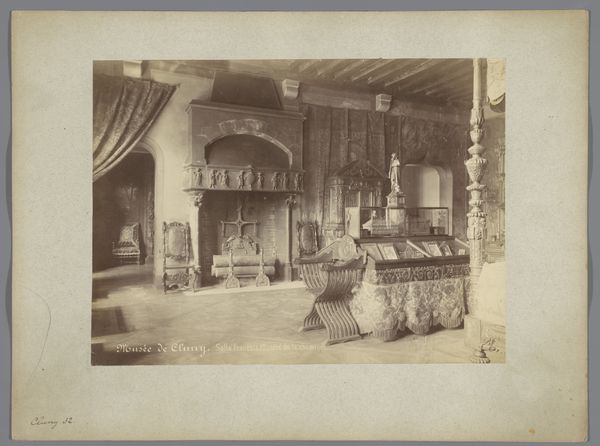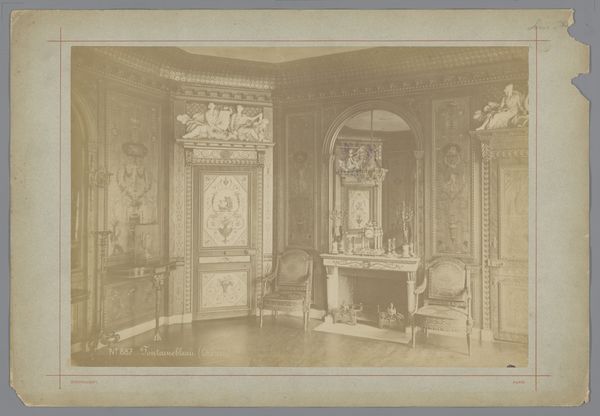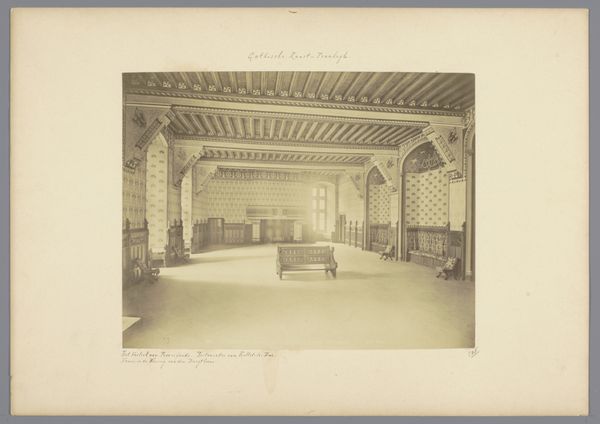
Zaal van het smeedijzer in het Musée de Cluny te Parijs 1850 - 1900
0:00
0:00
print, photography, gelatin-silver-print
# print
#
photography
#
gelatin-silver-print
#
genre-painting
#
history-painting
Dimensions: height 260 mm, width 345 mm
Copyright: Rijks Museum: Open Domain
Curator: Looking at this sepia-toned gelatin silver print titled "Zaal van het smeedijzer in het Musée de Cluny te Parijs", taken sometime between 1850 and 1900 by Médéric Mieusement, I'm struck by how it captures the historicizing impulse of the 19th century. Editor: It feels so staged, doesn't it? Almost like a theatrical backdrop. The light is gentle but feels manipulated, highlighting certain objects but not creating a natural ambiance. And yet there's something melancholic about it all, this staged, sepia-toned grandeur. Curator: Absolutely, the sepia tone gives it a nostalgic patina. The photo shows us the Musée de Cluny, now the Musée National du Moyen Âge, during a period when museums were solidifying their role in constructing national identity. The very act of displaying these objects, of framing them in a particular way, contributes to a specific narrative about French history and artistry. Editor: I’m particularly drawn to the arrangement of the objects. That globe prominently displayed seems almost… aspirational. The lighting gives it an otherworldly feel, suggesting knowledge and discovery. But is it knowledge for all, or just the privileged viewer within this constructed space? I find the symbol of that singular orb rather fascinating! Curator: That's a sharp point. Museums, then as now, can be powerful arbiters of taste and historical interpretation. Here, the carefully chosen artifacts, largely from the medieval period, presented in a staged, almost theatrical setting, are used to evoke a sense of national pride and continuity, particularly resonant during a period of significant social and political change in France. Editor: There's also a potent contrast here. Wrought iron suggests labor, craftsmanship, earthly effort. But the arrangement feels designed to lift it above the everyday, into the realm of art. To me this creates a potent symbolic dialogue of class, aspiration, and power within the visual culture of 19th century Paris. Curator: It’s that tension—between the objects' original function and their presentation as historical artifacts—that encapsulates the core of what museums do. They transform the meaning and context of objects, imbuing them with new significance within a specific cultural framework. Mieusement’s photograph captures this transformation perfectly, rendering a space that’s both a repository of history and a testament to the politics of display. Editor: It’s a constructed reality, designed to resonate. After looking deeper, this photo feels both nostalgic, staged, and oddly poignant to me. The very artifice of it tells its own compelling story.
Comments
No comments
Be the first to comment and join the conversation on the ultimate creative platform.
